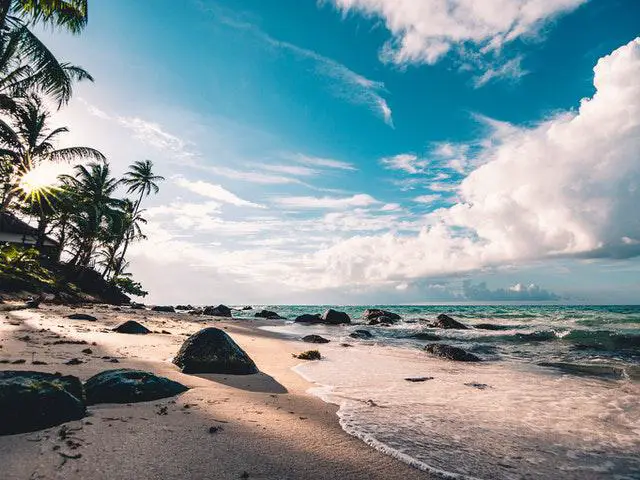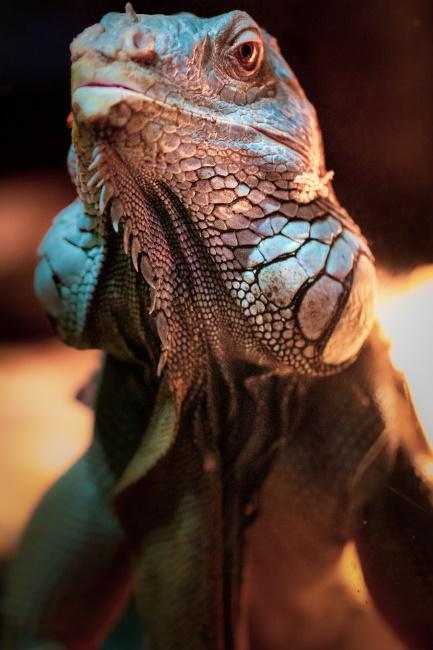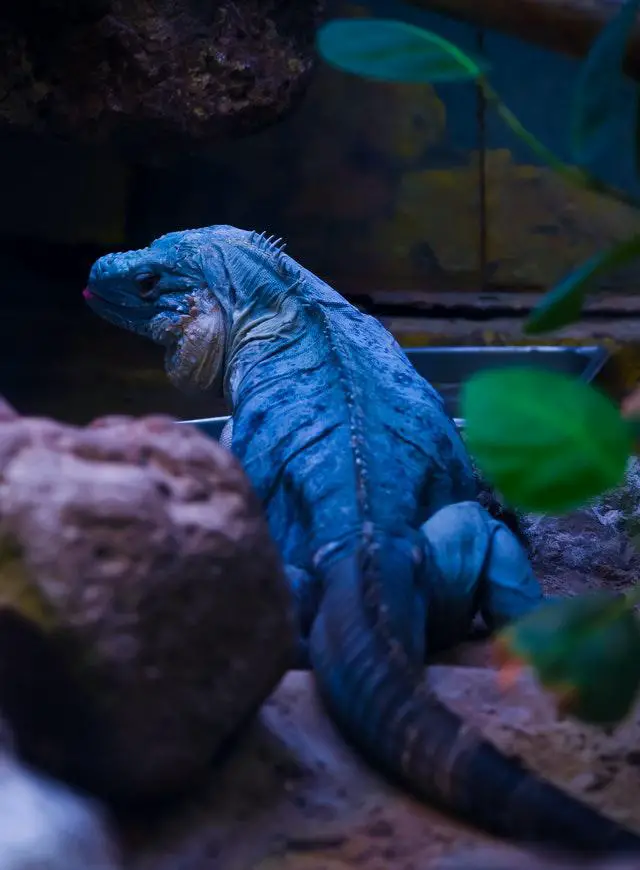The Blue Iguana
The Grand Cayman Islands lie to the west of the Caribbean Sea and is part of the British Overseas Territory. Here, you will find a rare and endangered species of lizards called the Blue Iguana. Although discovered long ago, it was only in 2004 that the species was reclassified due to the subtle genetic differences it has as compared to other species of lizards.
Characteristics of the Blue Iguana
There are both male and female blue iguanas. Being a native of the Cayman Islands, the male blue iguana is multi-colored, ranging from dark grey to turquoise blue. At the same time, the female blue iguana’s colors range from olive green to pale blue.
The scientific name given to the blue iguana is Cyclura Lewisi. You can trace the origin of the name to the Ancient Greek words cyclos, which means ‘circular.’ While the word, oura means ‘tail,’ as it has a thick, ring-like tail.
The Blue Iguana can grow to five feet and weighs about 14 kilograms. Its size and weight make it one of the biggest lizards in the western hemisphere. They can climb trees of over 15 feet. The males are much heavier and more large-sized than females.
Interesting Facts about the Blue Iguana
Blue Iguanas are much larger than your average desert iguanas. They are mostly herbivores and stay away from their predators by merging into nearby objects such as trees or rocks to avoid detection.
Here are the other interesting facts about the Blue Iguana.
1. Habitat
Blue iguanas mostly live around rocky and open areas, shrublands, and tropical dry forests. So, you can find them near open, sunlit areas near seashores in most parts of the Grand Cayman Islands. The other places that these species of lizards prefer to live in include those between farm clearings, roads, and gardens.
They also prefer a tropical climate over other types of habitats. So, you can also find them in tropical areas in and around the islands.

2. Diet
Being natives of the tropical climate, blue iguanas are mostly herbivorous and prefer leaves, flowers, and fruits for a diet. At times, however, you can also find them consuming insects, soil, the carcass of other animals, and fungi that grow around their territories. The species is also known to feed on different kinds of vegetables, such as carrots, sweet potatoes, and leafy greens.
3. Lifespan
Blue Iguanas have an average life span ranging from 20 to 40 years, although some can even live for up to 70 years.
4. Endangered Species
Although Blue Iguanas were found in large numbers, possibly before the advent of European colonization on the Grand Cayman Islands, by 2003, less than 15 of these species remained. According to estimations, the Blue Iguana is a most endangered species, and they will be extinct by the end of the 21st century.
Land clearance for agriculture, construction of roads, and the rapid development of real estate in the Grand Cayman Islands are the primary causes of their possible extinction. Other causes include consumption by rats and other predators and the increasing movement of automobiles in the area.
The IUCN classifies the blue iguana as an endangered species, owing to the rapid decline in their numbers. The body suggests that only 443 such species remain on the island.
5. Mating
The mating season of the blue iguana lies between May and June during a year. Mating occurs through the male’s head-bobs, which circles the female, grabbing the nape of its neck. The whole process takes place between 30 and 90 seconds. Blue iguanas don’t mate more than two times in a day.
After the mating process, the female blue iguana lays between one and 21 eggs between June and July. The number of eggs not only depends on the size of the female blue iguana but also its age.
6. Venom and Bite
Blue iguanas usually don’t have any venom in them. But they do have sharp teeth capable of tearing human skin. And when they bite, it can be extremely painful. They rarely bite, except when they feel increasingly threatened.

Other Facts About the Blue Iguana
Like most other iguanas or reptiles, the blue iguana is also a cold-blooded animal with a black body and reddish-brown eyes. They generally like to avoid the sunlight and hide under the rocks and caves during the daytime. Their color is turquoise blue when they are in a happy mood. However, the color changes to green when they feel threatened or uncomfortable.
Also, when blue iguanas meet other people, they lick them or the ground. The blue iguana shows different behaviors depending on where it licks. For instance, if it licks you on your finger, it shows kindness or friendship.
Another interesting fact about the blue iguana is that it seems to have a third-eye, also called the ‘parietal eye,’ on its forehead. The animal uses this eye to detect predators approaching from above.
You can also keep blue iguanas as pets. The species is present in various zoos across the world. It is also possible to train them as they are quite intelligent, owing to their brains’ size. They are capable of recognizing who their keepers are and exhibit various behaviors as you train them.
Although Blue iguanas live around the tropical regions, they are sturdy enough to survive in any harsh environment, such as deserts.
Iguana, Reptile, Lizard, Green, Blue
If you are looking to pet a blue iguana, you can always go to exotic pet collectors. These pet collectors also allow the blue iguana to breed on their home grounds. But do note that you cannot find the species in any other place than with a pet collector. So, you shouldn’t look for them in a pet shop or other such stores.
Final Thoughts
Do your research about the animal before you buy one. In that way, you will also get to know where you can get a blue iguana. If you are serious about having a blue iguana as a pet, you should know how to care for it. You must feed it accordingly and make sure that it doesn’t fall sick.
It would help if you also encouraged your pet blue iguana to drink lots of water to not suffer from dehydration.
So, make sure that you care well for your pet blue iguana by feeding it and keeping it safe from diseases.



